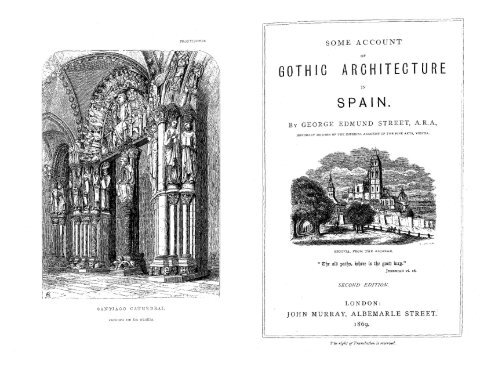

Even though Manfred and his forefathers are powerful, wealthy, and capable of administering control over their holdings, they are butting up against a greater force of law. He is able to hold on as long as he can because said grandfather also made a promise to pay for his sins by building convents and accepting that one day his line would be kicked out of the principality.

Manfred is not legitimate because his grandfather stole the claim to the principality. Children are fated to bear out what their fathers do, which is a reminder to men and women to lead virtuous lives lest, their sins continue to echo down the generations. Don Ricardo fabricated his claim to the principality and set in motion the deleterious events that would lead to the killing of innocent people, designs of divorce and incest, violence, and disarray. Indeed, this classic biblical and literary trope is central to Otranto. In a tongue-in-cheek fashion, Walpole-as-Marshal points out that The Sins of the Father is main moral of the story. The purely narrative form of Walpole’s novel, then, creates a fast-paced, immersive plot that mirrors the all-encompassing saturation of history and its consequences, which is a central theme of the novel. (It should be noted that The Castle of Otranto was the genesis of the archetypal Gothic characters: the noble peasant, the damsel in distress, and the evil tyrant). Similar to medieval plays that personified and made symbolic use of Vice and Virtue as characters, Walpole polarizes good and evil characters in his novel in their limited psychological complexity. This, alongside the five-act structure, confers to the novel a dramatic element that draws the reader in, and could explain the thinly drawn, stock characters.

Most notable about the language is the distinct lack of similes and metaphors, and the unmarked dialogue of the characters. The language of The Castle of Otranto is deliberately archaic, and the dialogue is stiff and unnatural to evoke a sense of translation this is in keeping with the first edition of the novel, in which Walpole claimed his novel was a translation of a medieval Italian tale. In the end Theodore marries Isabella, something that also suggests the strangeness of the world the characters inhabit. Theodore is the spitting image of Alfonso and Manfred mistakes him for that very figure. Theodore mistakes Frederic for a knight of Manfred's, also resulting bodily injury. Isabella and Matilda are practically interchangeable this results in Manfred murdering his own daughter (of course, Isabella might as well have been his daughter, hence the impropriety of his incestuous designs upon her).
#Gothic virtues and vices list drivers
Mistaken identity and doubling contribute to the suspenseful nature of the Gothic novel and are major drivers of events in Otranto. It sends his family and the social order he has created into disarray. This incest drive is a mortal sin and one that hearkens the end of his rule of Otranto. Manfred seems only to be concerned with his engagement in this incestuous relationship when he realizes that it can provide grounds for divorce it is when he realizes that it can benefit his political and social agenda that he becomes concerned with his decision to engage in such sin. He first decides to divorce her on the grounds that they are related so he can attempt to marry Isabella, a daughter-figure. Manfred cannot seem to avoid incest, regardless of whether or not he remains married to Hippolita. Incest as SinĪs a Gothic villain, Manfred's choice of sin is incest, creating a conflation of erotic, romantic, and familial love that inhibits his ability to reason. Manfred abandons Christian virtues in favor of Gothic passion - a passion so intense that it obscures his ability to reason, resulting in his seeking an incestuous affair and the dissolution of his legitimate marriage. Self-control, the Christian virtue that was often discussed in other literature of the period, is something that he utterly lacks. Manfred defines the Gothic villain perfectly: he is a powerful male figure who allows his sinful passions and evil nature to obscure the reason and goodness he possesses. The characterization of Manfred in particular is intriguing in that he is portrayed not only as the novel's antagonist, but also as a man who succumbs to villainous behavior because of his own lack of self-control. As a Gothic text, The Castle of Otranto provides various tropes through which terror and disgust are expounded upon.


 0 kommentar(er)
0 kommentar(er)
